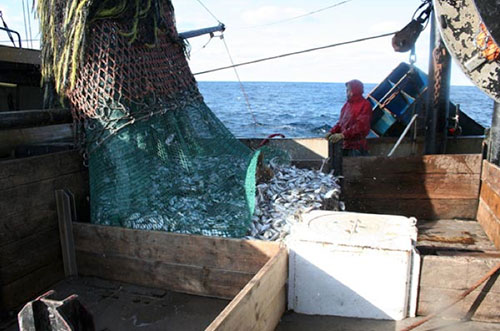
U.S. fisheries continue to rebuild; overfishing and overfished numbers at all-time lows
April 17, 2015
The report, produced annually since 1997, highlights the United States’ continued progress towards sustainably managing fish stocks. This progress is a result of the combined efforts of NOAA Fisheries, the regional fishery management councils, the fishing industry, and other partners.
Butterfish from Gulf of Maine to Cape Hatteras was rebuilt in 2014.
A stock is on the overfishing list when the annual catch rate is too high. A stock is on the overfished list when the population size of a stock is too low, whether because of fishing or other causes. “This report illustrates that the science-based management process under the Magnuson-Stevens Act is working to end overfishing and rebuild stocks,” said Eileen Sobeck, assistant NOAA administrator for fisheries. “While we have made tremendous progress, we know there’s more work to be done -- especially as we continue to document changes to our world’s oceans and ecosystems. We will continue to strive toward sustainable management of our nation’s fisheries in order to preserve our oceans for future generations.” The report also finds that three more fish stocks: Gulf of Maine/Cape Hatteras butterfish; Gulf of Mexico gag grouper; and, Mid-Atlantic Coast golden tilefish were rebuilt to target levels in 2014, bringing the total number of rebuilt U.S. marine fish stocks to 37 since 2000. “Our agency wants to let consumers know that the United States’ global leadership in responsible fisheries and sustainable seafood is paying off,” Sobeck said. “We are moving forward more than ever with efforts to replicate and export stewardship practices internationally. As a result of the combined efforts of NOAA Fisheries, the regional fishery management councils, and all of our partners, the number of stocks listed as subject to overfishing or overfished continues to decline and is at an all-time low.”
Edited by Mary Kauffman, SitNews
On the Web:
Source of News:
|
||
